Explained below.
Step-by-step explanation:
The question is:
Compare the distributions using either the means and standard deviations or the five-number summaries. Justify your choice.
Set A: {36, 51, 37, 42, 54, 39, 53, 42, 46, 38, 50, 47}
Set B: {22, 57, 46, 24, 31, 41, 64, 50, 28, 59, 65, 38}
The five-number summary is:
MinimumFirst Quartile Median Third Quartile MaximumThe five-number summary for set A is:
Variable Minimum Q₁ Median Q₃ Maximum
Set A 36.00 38.25 44.00 50.75 54.00
The five-number summary for set B is:
Variable Minimum Q₁ Median Q₃ Maximum
Set B 22.00 28.75 48.00 58.50 65.00
Compute the mean for both the data as follows:
![Mean_{A}=\frac{1}{12}\times [36+51+37+...+47]=44.58\approx 44.6\\\\Mean_{B}=\frac{1}{12}\times [22+57+46+...+38]=44.58\approx 44.6](/tpl/images/0703/5372/ba6cb.png)
Compare mean and median for the two data:

Compute the standard deviation for both the set as follows:
![SD_{A}=\sqrt{\frac{1}{12-1}\times [(36-44.6)^{2}+...+(47-44.6)^{2}]}=6.44\approx 6.4\\\\SD_{B}=\sqrt{\frac{1}{12-1}\times [(22-44.6)^{2}+...+(38-44.6)^{2}]}=15.56\approx 15.6](/tpl/images/0703/5372/6d95f.png)
 9
9 Explained below.
Step-by-step explanation:
The question is:
Compare the distributions using either the means and standard deviations or the five-number summaries. Justify your choice.
Set A: {36, 51, 37, 42, 54, 39, 53, 42, 46, 38, 50, 47}
Set B: {22, 57, 46, 24, 31, 41, 64, 50, 28, 59, 65, 38}
The five-number summary is:
MinimumFirst Quartile Median Third Quartile MaximumThe five-number summary for set A is:
Variable Minimum Q₁ Median Q₃ Maximum
Set A 36.00 38.25 44.00 50.75 54.00
The five-number summary for set B is:
Variable Minimum Q₁ Median Q₃ Maximum
Set B 22.00 28.75 48.00 58.50 65.00
Compute the mean for both the data as follows:
![Mean_{A}=\frac{1}{12}\times [36+51+37+...+47]=44.58\approx 44.6\\\\Mean_{B}=\frac{1}{12}\times [22+57+46+...+38]=44.58\approx 44.6](/tpl/images/0703/5372/ba6cb.png)
Compare mean and median for the two data:

Compute the standard deviation for both the set as follows:
![SD_{A}=\sqrt{\frac{1}{12-1}\times [(36-44.6)^{2}+...+(47-44.6)^{2}]}=6.44\approx 6.4\\\\SD_{B}=\sqrt{\frac{1}{12-1}\times [(22-44.6)^{2}+...+(38-44.6)^{2}]}=15.56\approx 15.6](/tpl/images/0703/5372/6d95f.png)
 9
9 Explained below.
Step-by-step explanation:
(10)
The data set is:
S = {124, 94, 129, 109, 114}
The mean and standard deviation are:
![\bar x=\frac{1}{n}\sum x=\frac{1}{5}\times [124+94+...+114]=114\\\\s=\sqrt{\frac{1}{n-1}\sum ( x-\bar x)^{2}}](/tpl/images/0723/8351/af3ec.png)
![=\sqrt{\frac{1}{5-1}\times [(124-114)^{2}+(94-114)^{2}+...+(114-114)^{2}]}\\=\sqrt{\frac{750}{4}}\\=13.6931\\\approx 13.69](/tpl/images/0723/8351/2e055.png)
The correct option is B.
(11)
According to the Empirical 95% of the data for a Normal distribution are within 2 standard deviations of the mean.
So, the adult male's height is in the same range as about 95% of the other adult males whose heights were measured.
The correct option is B.
(12)
Let the score be X.
Given:
μ = 100
σ = 26


The correct option is B.
(13)
Let X be the prices of a certain model of new homes.
Given: 
Compute the percentage of buyers who paid between $147,700 and $152,300 as follows:


According to the 68-95-99.7, 68% of the data for a Normal distribution are within 1 standard deviations of the mean.
The correct option is D.
(14)
Compute the percentage of buyers who paid more than $154,800 as follows:


According to the 68-95-99.7, 95% of the data for a Normal distribution are within 2 standard deviations of the mean. Then the percentage of data above 2 standard deviations of the mean will be 97.5% and below 2 standard deviations of the mean will be 2.5%.
The correct option is D.
(15)
The z-score is given as follows:

Explained below.
Step-by-step explanation:
(10)
The data set is:
S = {124, 94, 129, 109, 114}
The mean and standard deviation are:
![\bar x=\frac{1}{n}\sum x=\frac{1}{5}\times [124+94+...+114]=114\\\\s=\sqrt{\frac{1}{n-1}\sum ( x-\bar x)^{2}}](/tpl/images/0723/8351/af3ec.png)
![=\sqrt{\frac{1}{5-1}\times [(124-114)^{2}+(94-114)^{2}+...+(114-114)^{2}]}\\=\sqrt{\frac{750}{4}}\\=13.6931\\\approx 13.69](/tpl/images/0723/8351/2e055.png)
The correct option is B.
(11)
According to the Empirical 95% of the data for a Normal distribution are within 2 standard deviations of the mean.
So, the adult male's height is in the same range as about 95% of the other adult males whose heights were measured.
The correct option is B.
(12)
Let the score be X.
Given:
μ = 100
σ = 26


The correct option is B.
(13)
Let X be the prices of a certain model of new homes.
Given: 
Compute the percentage of buyers who paid between $147,700 and $152,300 as follows:


According to the 68-95-99.7, 68% of the data for a Normal distribution are within 1 standard deviations of the mean.
The correct option is D.
(14)
Compute the percentage of buyers who paid more than $154,800 as follows:


According to the 68-95-99.7, 95% of the data for a Normal distribution are within 2 standard deviations of the mean. Then the percentage of data above 2 standard deviations of the mean will be 97.5% and below 2 standard deviations of the mean will be 2.5%.
The correct option is D.
(15)
The z-score is given as follows:

 3
3 Step-by-step explanation:
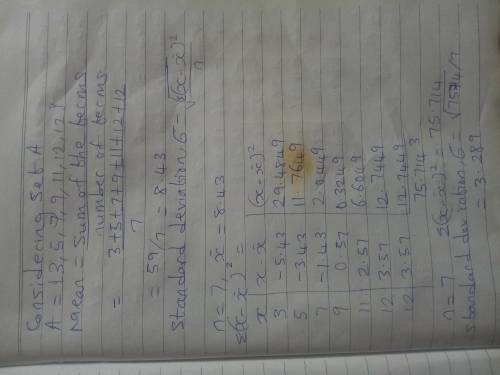
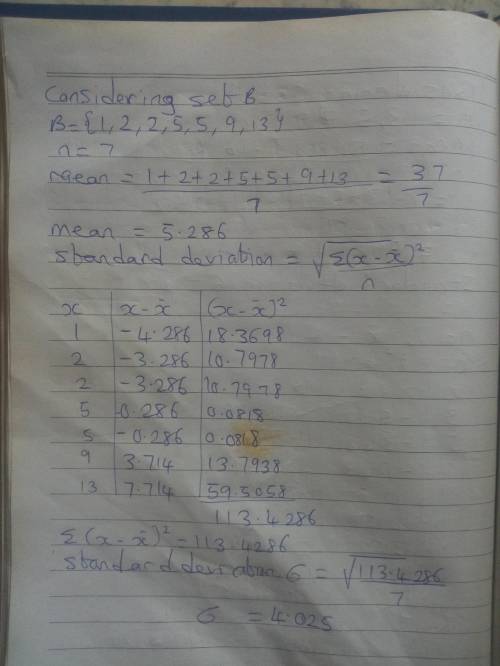
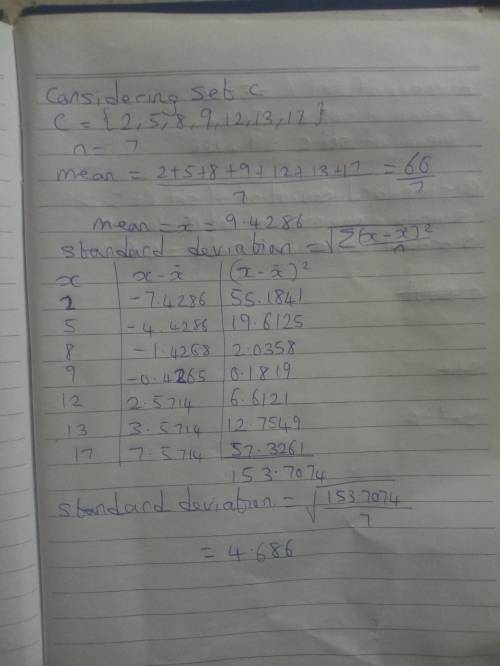
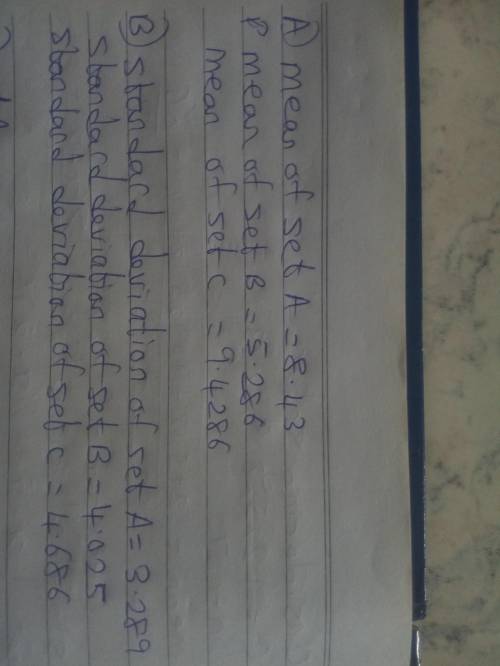
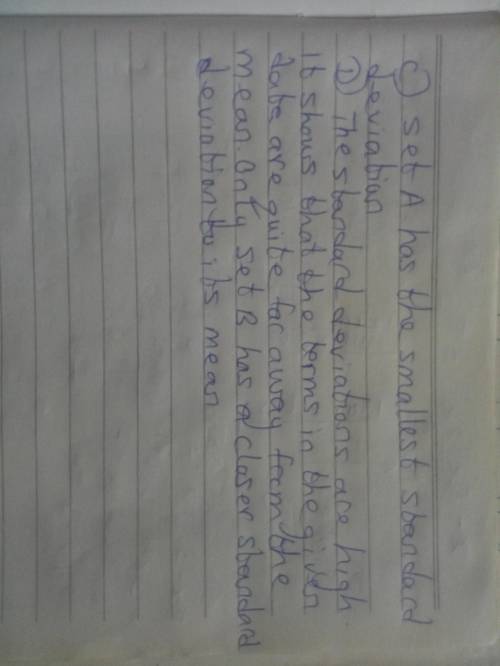
 17
17 Considering the first statement
Standard deviation is resistive to unusual values
This statement is false because standard deviation is the numeric measure of deviation of the each observation from the mean
Considering the second statement
The standard deviation of a set of values is equal to 0 if and only if all of the values are the same.
This statement is true because standard deviation is the numeric measure of deviation of the each observation from the mean.
Considering the third statement
Standard deviation is never negative.
This statement is true because standard deviation is the numeric measure of deviation of the each observation from the mean.
Considering the fourth statement
Changing the units of a set of values (e.g., converting from inches to feet) does not affect its standard deviation
This statement is false because standard deviation is the numeric measure of deviation of the each observation from the mean
Considering the fifth statement
If a set of values has a mean of 0 and a standard deviation that is not 0, then adding a new data point with a value of 0 will have no effect on the standard deviation.
This statement is false because , let take an example
x -4 - 3 0 3 4
Generally the mean is mathematically evaluated as

=> 
=> 
Generally the standard deviation is mathematically evaluated as


=> 
Now when zero is removed the standard deviation is

=> 
Since  the above statement is false
the above statement is false
Considering the sixth statement
Standard deviation represents how far a group of values are from the mean of those values, on average.
This statement is true because standard deviation is the numeric measure of deviation of the each observation from the mean.
Step-by-step explanation:
 17
17 
It will provide an instant answer!
